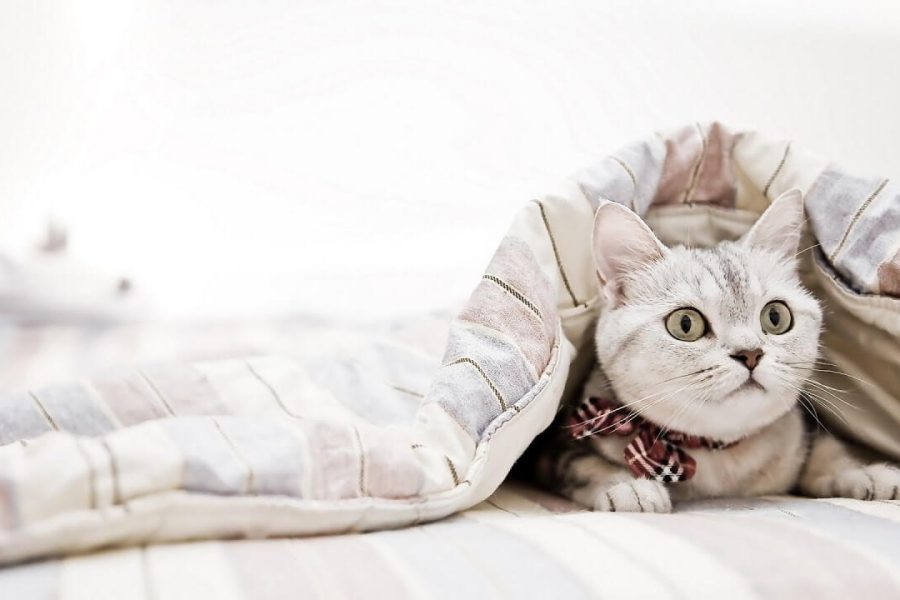Museums are usually associated with art galleries, art exhibitions, classic painting and sculpture. But recently, museums are opening more and more often that can interest, first of all, with their unusual collection, unexpected and even absurd exposition.
1. Museum of Alchemists and Magicians of Old Prague
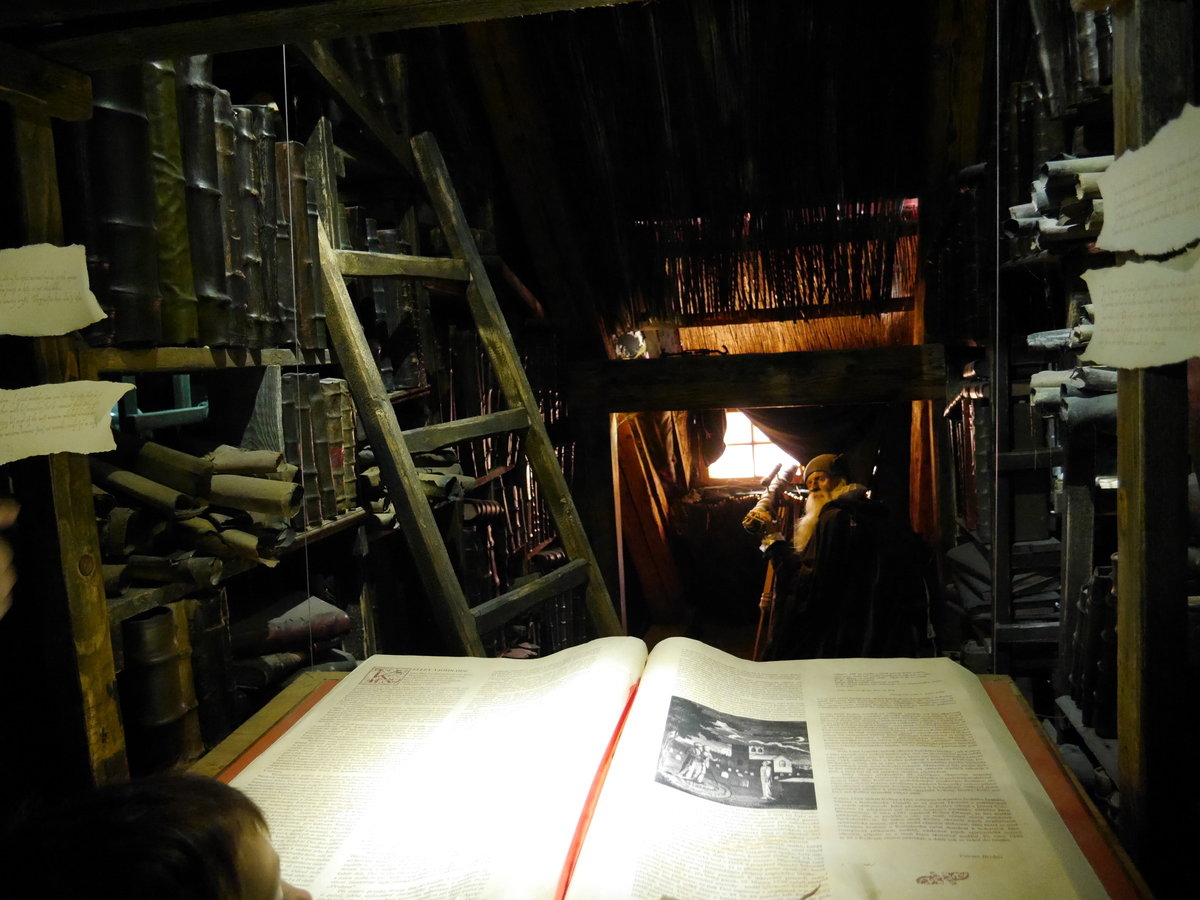
It so happened historically that in the Middle Ages, alchemists and magicians from all over Europe came to Prague. As is known, most of them were the most ordinary charlatans and swindlers. Scottish mystic and alchemist Edward Kelly was no exception, but, unlike all the others, he was a little luckier.
It was at that time that Emperor Rudolf II, who was seriously interested in the occult and personally engaged in the search for the philosopher's stone, settled in Prague Castle. It is not surprising that Kelly quickly gained the patronage of the monarch and received from him a well-equipped laboratory - it was here that he was supposed to turn the most basic metals into gold.
As expected, the Roman king never saw any gold, and when his patience finally snapped, the pseudo-scientist was thrown behind bars, where he died soon after under rather mysterious circumstances. The house with the mysterious name "At the Donkey's Cradle", where Kelly's laboratory was once located, is now home to one of the most interesting and mysterious museums in the world.
Within the walls of the museum you will find many amazing exhibits, most of which are not originals, and therefore you are allowed to touch them with your hands - these are scrolls, dried herbs, flasks with all sorts of potions, and stuffed animals on which these potions were allegedly tested. In addition, you will be able to blow on one of the furnaces located here and try to prepare your own magical brew in it.
Have you ever dreamed of trying the elixir of youth? Here you can do anything! An intricate system of glass tubes of different diameters, once intended for the preparation of these very magical elixirs, will lead you straight to "Kellixir" - a wine restaurant of alchemists.
2. Sewer Museum in Paris

The first primitive sewer system appeared in Paris during the Roman Empire. All 18 meters of it have been preserved to this day in one of the capital's quarters under the ruins of ancient baths. Interestingly, the history of the Parisian sewer system has become a significant part of the history of the development of the city itself.
Since the collapse of the Roman Empire, Paris has been immersed in filth and complete unsanitary conditions for centuries. All the garbage was unceremoniously dumped into open drains, and when the water level in the Seine rose, all this stinking waste erupted out, covering the city streets. Incidentally, the death of the eldest son of King Louis VI is also connected with this fact - having accidentally fallen into a gutter, Philippe the Young contracted a fatal infection from which he was never able to recover.
All attempts to eliminate this serious problem ended in nothing. The situation changed only in 1850, when the talented French engineer Eugene Belgrand took matters into his own hands. It took him 10 years to put the Parisian sewer system in order. Belgrand designed a new, flawless system of sewer tunnels, incorporating existing but long-forgotten canals into it.
In order to clear the newly discovered tunnels as quickly and cheaply as possible, a rumor was spread in Paris that valuables had been found there. Thousands of greedy treasure hunters rushed underground in search of riches. Breaking through the endless filth and raking up tons of centuries-old dirt, they, without noticing it, cleared kilometers of tunnels for the cunning Belgrand.
These and other equally amazing stories will be told to you by the Sewer Museum in Paris. Here you will be able to see with your own eyes how an underground tunnel is arranged from the inside, look at the Avenue Bosquet collector and the flood protection system at Place de la Résistance. You will also learn what methods of water purification were used throughout the existence of the sewer system, examine models and real sewer equipment.
3. International Spy Museum in Washington

One of the most original and unique museums, oddly enough, was created by real spies. The founder of the International Spy Museum, Peter Ernest, served in the CIA for 36 years, and the members of the Advisory Council are former agents of the world's intelligence agencies: the directors of the CIA and FBI, a major general of the KGB, the chairman of the US House of Representatives, an employee of the US National Security Council, etc. Ex-spies from all over the world are actively involved in cooperation as tour guides.
An unusual museum, which opened in July 2002 in the American capital, presents visitors with 5 permanent exhibitions. However, before visiting the main exhibition halls, new arrivals will have to undergo a kind of "strength test": come up with a new name and biography, decide on the purpose of their arrival and prove the truth of their legend on a lie detector. In the "Spy School", excursionists are offered to take a special course, which includes training in basic spy skills. You will be taught how to work with listening devices, detect external surveillance, the art of transformation, cracking codes and the basics of cryptography.
You will be able to immediately apply the acquired skills in practice - various quests have been prepared for this. For example, you will need to identify a hidden Iranian naval base or a training camp for Afghan terrorists on aerial photographs; figure out which of the characters appearing on the screens poses a threat; find the password to deactivate an explosive device; climb into a ventilation duct and find a place from where you can eavesdrop on secret negotiations between the assistants of the former Cuban dictator.
In the other four halls you will get acquainted with the stages of intelligence development from biblical times to the end of the 20th century, learn about the lives of real special agents and details of the Cold War period. You will be shown the structure and operation of various technical means ever used by spies - this includes a pistol in a case from under women's lipstick, and a camera that takes photos "through the wall", a portable encryption machine called "Enigma", a coat with camera buttons, an umbrella with a poisoned tip and, finally, the flying Aston Martin of the famous agent 007.
In the souvenir shop of the exhibition complex you can buy various interesting trinkets: boxes with hiding places, watches with a built-in camera, master keys disguised as a regular credit card, pens with invisible ink, encryption puzzles, office folders marked “Top Secret” and much, much more.
4. Museum of Departed Souls in Rome
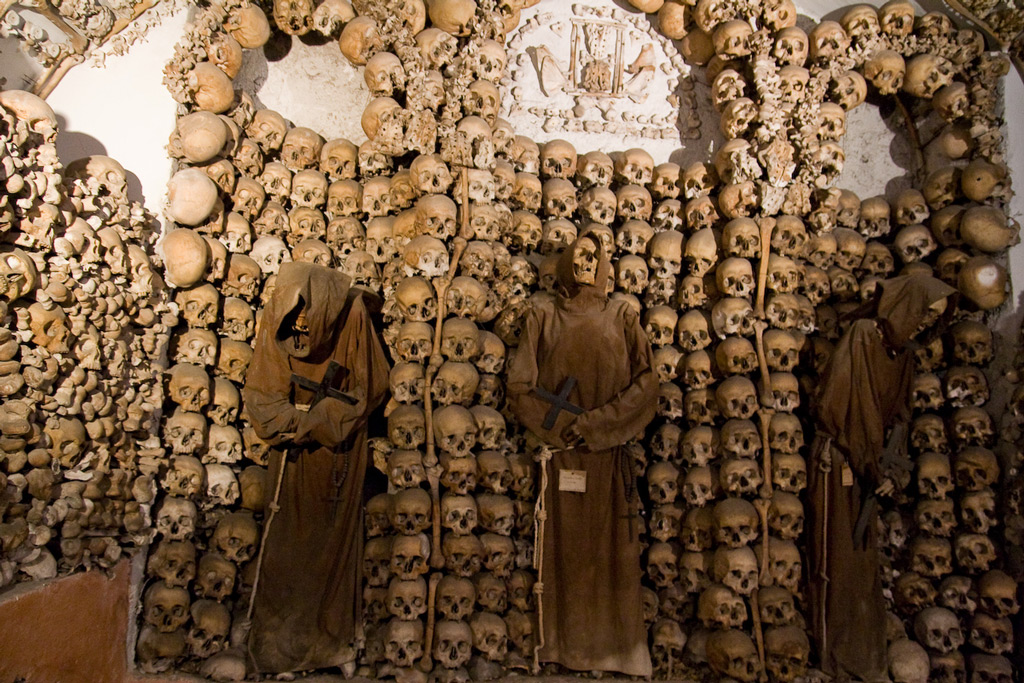
Especially for lovers of everything mystical, with the permission of the local priest, the Museum of Departed Souls opens its doors, located in the building of one of the Catholic churches of Rome. It was founded in 1912, and its first artifact was a nightcap with sooty traces of women's fingers. Legend has it that in 1873, a certain Le Senechel buried his wife, but the frivolous widower was definitely not in danger of dying of grief. But the jealous deceased did not put up with such an attitude towards herself and decided to teach her unfaithful spouse a lesson. One night, the ghost of the deceased Louise Le Senechel quietly crept up to her sleeping husband, painfully pinched the scoundrel's nose several times and furiously pulled off his headdress, thereby forcing the libertine to observe mourning according to all the rules.
The museum also contains hundreds of other exhibits, one way or another connected with the other world. They were brought from all corners of Italy, France, Belgium and Germany. Most of them are various objects with the outlines of palms or feet burned into them. Like the traces of soot-stained fingers on the aforementioned nightcap, the marks left on these objects are considered not accidental.
The history of the museum's creation began in 1897, when a fire suddenly broke out in the newly built chapel on the church grounds. After the flames were extinguished, the parish priest Victor Jouet had to deal with an inexplicable phenomenon that appeared on the wall near the altar in the form of an image of a face tormented by torment. Father Jouet was sure that the image that appeared to him was nothing other than a soul from the fire-engulfed Purgatory asking for help. From then on, he decided to dedicate his life to searching for evidence of the existence of another world and souls coming from the other world to earth asking for salvation.
Thus, in the Museum of Departed Souls, various wooden tabletops, old nightgowns, surviving pieces of fabric, prayer books and other objects with the same traces of fire have found their place. Quite unusual photographs, taken long ago in these very walls, are also kept here. The blurred silhouettes and "exposures" of unknown origin visible on them suggest the idea that it is not at all by chance that all the pictures taken here, even by professionals, come out with similar optical defects.
5. "Corpus" - a journey through the human body
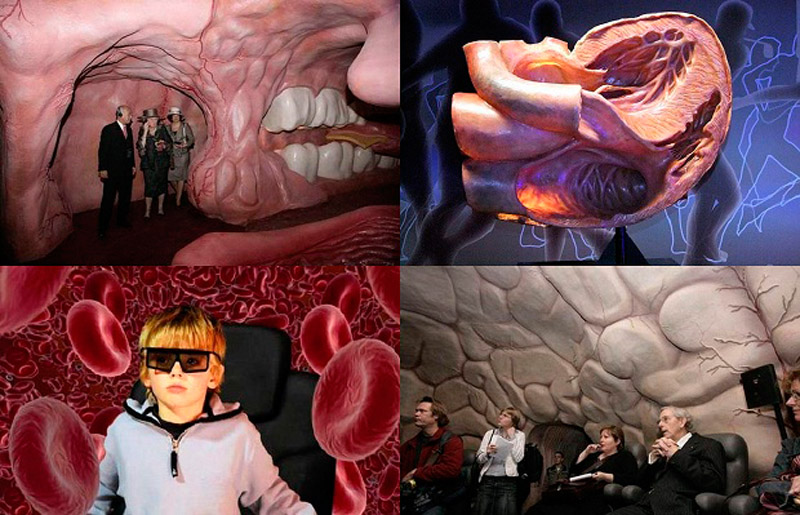

You can see and even hear how a piece of cheese is digested in a person's stomach, feel like part of the circulatory system and travel through its vessels, and find out what happens in your body when you sneeze by visiting the Dutch Museum of the Human Body. Its seven-story building has an original extension on the side in the form of a 35-meter figure of a seated Homo sapiens.
You'll begin your 55-minute tour of the human body by riding an escalator up into an open wound on the statue's knee. From there, you'll enter the femur, where you'll be shown how red and white blood cells are made. You'll also get a close-up look at how muscles and joints work as you walk.
In the womb, visitors are invited to observe the most wonderful process that occurs in the female body - the birth of a new life. The spectacle is truly amazing! Then the tour continues in the gastrointestinal tract, where you will be shown how the delicious things you have eaten move around the body. After the intestines, guests are taken out into the fresh air, but not to give you a chance to catch your breath, but to explain to you the complexity of the breathing process.
From the respiratory system, the excursionists' path leads to the very heart - this is where each of them will have to try on the role of a red blood cell. From here, visitors are sent to the oral cavity to feel the taste buds, tickle the vocal cords and jump on a rubber tongue to the cheerful sounds of burping. Then, through the middle ear, and then the nasal cavity, you will get to the eyeball and look at this world in a truly new way! You will learn how the image is formed on the retina, how the received visual information is transmitted to the brain. Incidentally, it is among the convolutions of the brain that this truly fantastic adventure ends.
6. Hair Museum (Türkiye)
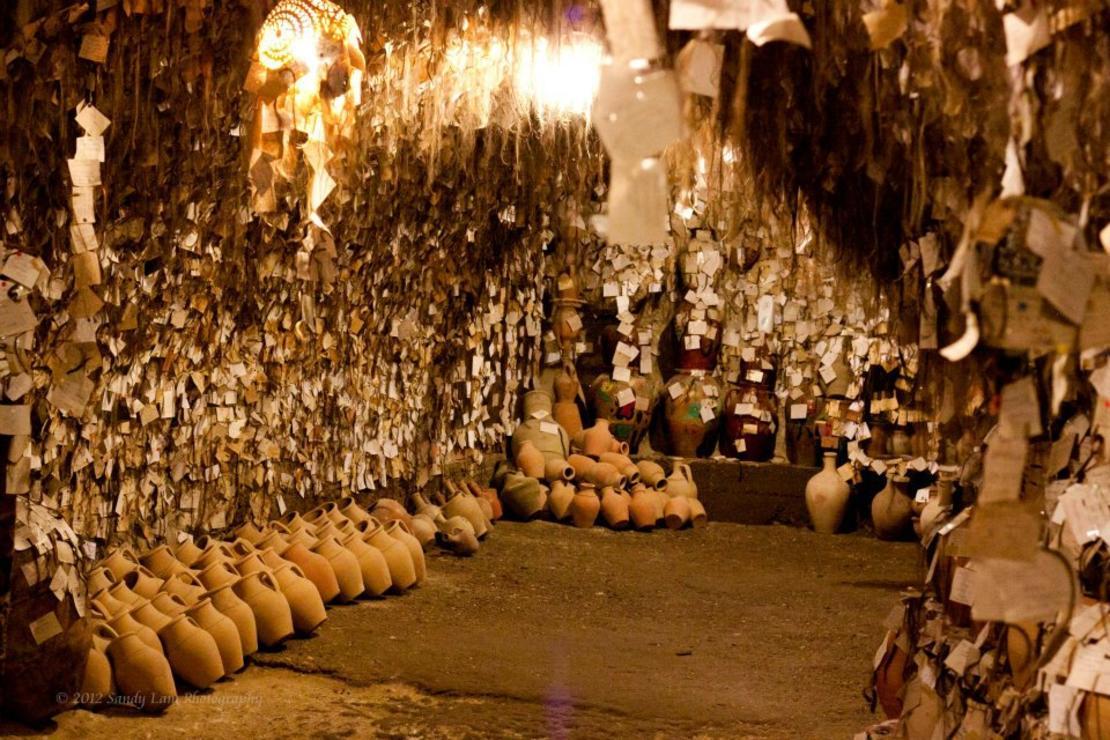
In the Turkish city of Avanos there is a hair museum, which contains locks of hair from women from all over the world – about 16,000 exhibits. Near each lock there is a plaque stating the name and address of its owner.
The founder and owner of this museum is Galip Koruktsu, who also owns a ceramics museum, in the basement of which he placed such an unusual hair collection. The sight in the basement is truly impressive - thousands of signed strands hang everywhere. Most often, the owner is asked how he managed to collect such a collection, to which Galip with a sly smile replies that these are, supposedly, voluntary donations.
The beginning was laid by the sad story with Galip's beloved woman, who left him a lock of hair when they parted. Some sensitive ladies, listening to this melodramatic story, are ready to part with part of their own hair right there. But Galip does not always agree to such a sacrifice, refusing the owners of dirty, unkempt, dye-damaged hair. Many tourists are flattered by the fact that some of their hair will decorate such a popular museum. Galip got into the Guinness Book of Records as the owner of the largest collection of human hair in the world.
7. Sulabh Toilet Museum (India)

This unusual museum has an international collection of latrines from all over the world. Each of us knows how our own toilet is arranged and has long been accustomed to it, but we have a poor idea of what it looks like in other nations. The Sulabh Museum presents the history of toilets of different nations.
Chamber pots have changed a lot over the millennia. The museum also reflects modern progress in this area, telling about the latest innovations in this type of plumbing, which is absolutely essential! Royal chamber pots, similar to thrones, and a medieval portable toilet resembling a treasure chest (so that robbers don’t rejoice too soon!) are arranged in strict order. Queen Elizabeth I of England preferred a frilly chamber pot, and Victoria sat on a golden vessel. The oldest specimen here is about 4,500 years old.
In addition to the opportunity to see all sorts of chamber pots, the museum also offers interesting facts about the management of natural needs, the norms of "toilet etiquette", and the rules of sanitation of past centuries. The museum was created by Dr. Pathaka, thus he sought to attract the attention of the Indian authorities to the problems of sanitation in the country and the lack of public toilets.
8. Museum of Death (USA)

In the Californian city of Los Angeles, there is a museum dedicated to the silent but persistent lady with a scythe who comes to everyone. The Museum of Death never suffers from an influx of visitors, who take away from here lasting impressions that haunt them for a long time. The museum was opened on Hollywood Boulevard in 1995.
There are no age restrictions for entry here, apparently based on the indisputable assertion that "we'll all be there." Therefore, visitors often faint here, since the exhibits here are not designed for the faint of heart. Here you can see the head of the maniac Henri Pandru, who became known under the nickname "Bluebeard." The museum often hosts exhibitions with equally dark themes, and horror films are shot.
9. Phallus Museum (Iceland)
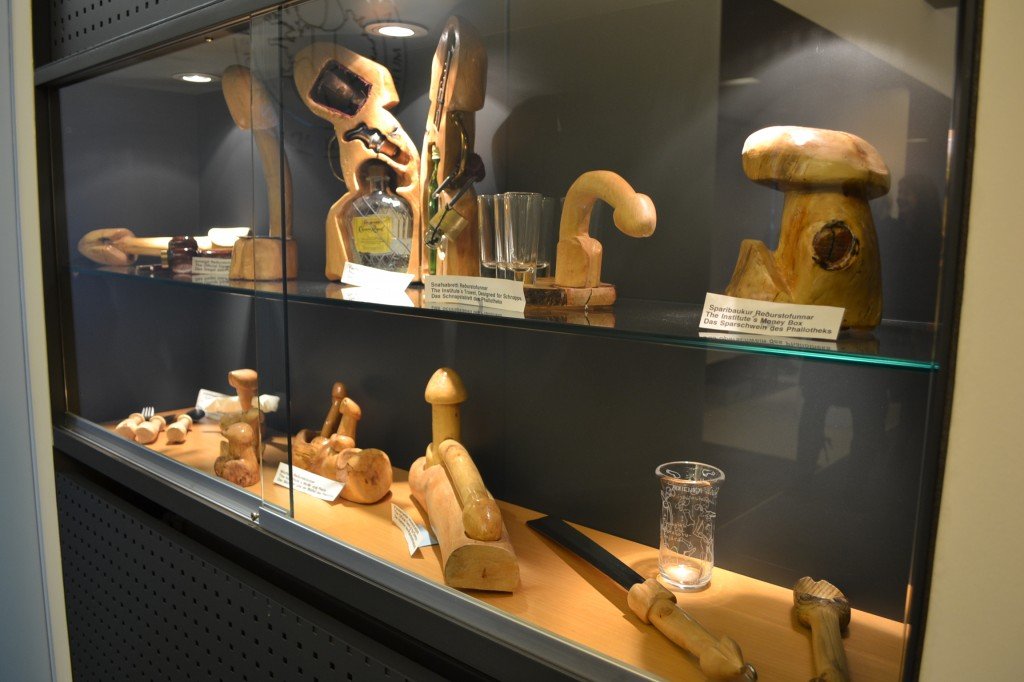
After retiring, teacher Sigurdur Hjartarson founded the Phallus Museum in Reykjavik in 1997. His interest in reproductive organs began as a child, when he was given a whip made from a bull's phallus. That's when he began collecting reproductive organs from any mammals that live in Iceland.
By now, he has collected 280 members from 90 different species, ranging in size from hamsters to whales. Naturally, the largest member belongs to the blue whale, the head of which alone weighs 70 kg and is 1.7 m long. The entire whale phallus weighs 350-450 kg and is about 5 m long. But the hamster's phallus is more modest - some 2 mm, so its causal place must be examined with a magnifying glass. The museum presents the supposed phalluses of such mythological creatures as trolls and elves. Of course, male intimate organs were not forgotten either. This unusual museum is open all year round.
10. Mafia Museum (Italy)

People strongly associate the Mafia with Italy, or more precisely with Sicily. Many writers and directors have dedicated their works to it. The purpose of creating this museum was to convey the truth about this social phenomenon to the general public. This type of organized crime originated, grew strong and acquired an unprecedented scope on this southern Italian island, it is characterized by a strict hierarchy and clear organization.
The museum's halls display the long history of Italian organized crime. Newspapers with loud headlines telling of the atrocities of the Cosa Nostra, documents and materials of high-profile trials, as well as the results of the government's fierce fight against the mafia are on display here. The exhibits are very realistic, often accompanied not only by sound and light effects, but also by smells. People with weak psyche should not visit some of the museum's halls. On the very first day of the museum's work, some of its visitors felt ill after visiting the torture chamber. You can also see ingenious voting booths here, as evidence of the intertwining of the mafia and government structures.
The bloody war against the mafia lasted for decades, and the museum tells the story of honest people who fulfilled their civic duty and freed Italy from such a terrible phenomenon as the mafia.
11. Marijuana Museum (Netherlands)

If there was to be a marijuana museum somewhere, where else but in Holland? Where the weed is legal, that's where such a museum should be. From the outside it looks like a small shop, but once inside you immediately realize that it is not. For centuries, hemp has served man faithfully: as food, fuel, raw material for paper and fabric, and medicine.
The museum exhibit features thousands of items related to this plant, which humans have been using since time immemorial. Visitors are told about the history of the spread of cannabis around the world. The museum has ancient medical tomes describing illnesses that were treated with this herb and recipes for medicines made from it. It also tells about the process of legalizing marijuana, displays durable and environmentally friendly beautiful clothing woven from this herb, and hundreds of different smoking pipes made in different parts of the world.
12. Museum of Mummies (Mexico)
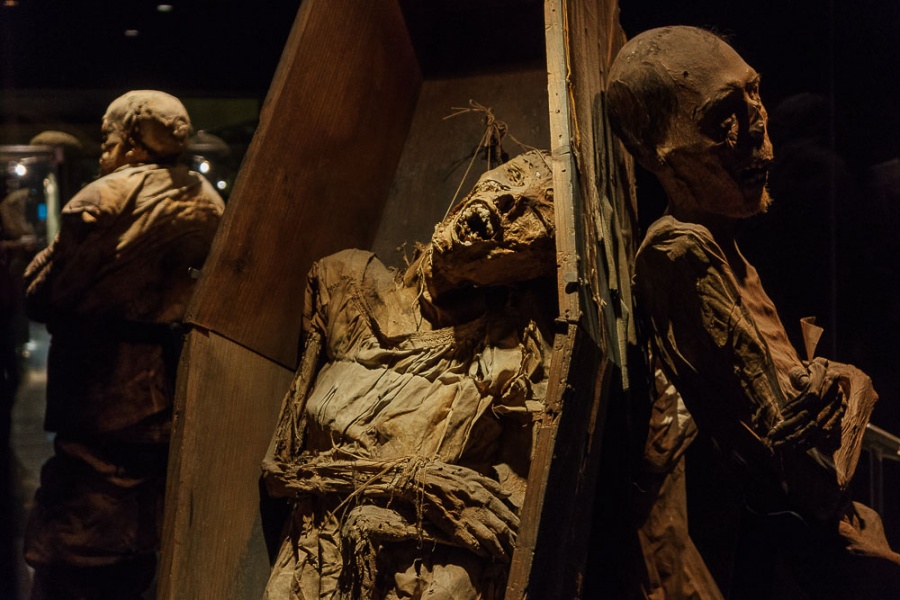
In 1833, a cholera outbreak occurred in the Mexican city of Guanajuato, which claimed many lives. Many of the victims of this epidemic, found in the city cemetery, were naturally mummified, and they served as the basis for the exhibition of the mummies museum.
Scientists have suggested that between 1865 and 1958, these bodies were exhumed due to the introduction of a new tax, according to which relatives of the deceased had to pay for the latter's stay in the cemetery. Almost no one wanted to pay, so almost all the remains were brought to light. But only one of the 50 deceased was naturally mummified; many had preserved nails, teeth, hair, even clothes. The reason for such amazing preservation was the unique composition of the local soil and climate, due to which such mummification of remains became possible - without any mysticism.
The mummies were placed in a room located in the cemetery. Gradually, they began to attract visitors to the cemetery and tourists, who were shown the local curiosity for a few pesos. Eventually, this unusual mummy museum emerged, in which the remains of 59 people are exhibited, including several children.
13. Underwater Museum of Art (Mexico)
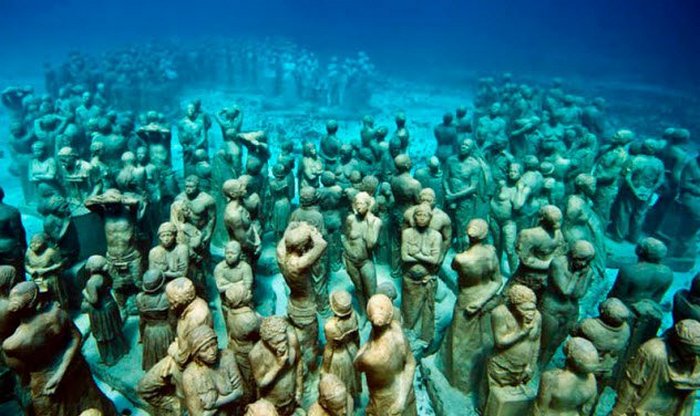
There is another unusual museum in the same country, which is somewhat more difficult to get into than regular museums due to the fact that it is located several meters below sea level. The purpose of organizing the museum was to attract public attention to the preservation of coral reefs near Cancun, which suffered greatly from the abundance of tourists.
Here you can book a three-hour tour with 45-minute snorkeling, looking at the sculptures located underwater, observing the life of the coral reef and all its amazing inhabitants. The statues are made of environmentally friendly materials, and the corals that have begun to grow on some of them are the best proof of this.
14. Bata Shoe Museum (Canada)

People who know a lot about good shoes, when traveling to Toronto, will definitely visit the museum of the famous Czech immigrant - shoe manufacturer Bata. His collection contains about 13,000 pairs of shoes for all tastes. The exhibits cover the history of shoe development over 4,000 years, here are presented not only the shoe samples themselves, but also the traditions of their production in different countries. Here you can admire the elegant shoes of the dandies of the Renaissance, Marilyn Monroe's red stiletto heels. There are even astronaut boots here. The museum shows unique footage showing the secrets of hand-made leather goods used by different peoples.
15. Museum of Eroticism (Amsterdam)

The Museum of Eroticism exhibits everything that is most directly connected with the main nest of the so-called Amsterdam debauchery - the world-famous Red Light District. The museum occupies three floors, on which various exhibits are located, presented in the form of statues, paintings, photographs, old engravings. All of them demonstrate either direct sexual intercourse or genitals. Visitors to the museum will be able to watch the film "Snow White and the Seven Dwarfs", banned from being shown on television, and an improvised private booth with a wax figure of a representative of the oldest profession.
You can take an original and even practical souvenir from the museum - for example, condoms of different colors, smells and tastes from a special machine or items from a souvenir shop.
16. Museum of Medieval Torture Instruments (Prague)

In medieval Europe, the Inquisition and torture were an inseparable part of history. That is why the theme of torture became the main one in this Prague museum. The variety of instruments and methods of torture is simply amazing. There is nothing surprising here, because torture was a common thing for the Inquisition, so the instruments for its implementation were constantly modified. Chairs with teeth, skull crushers, chairs for witches, chastity belts, braziers, various tongs and instruments for tearing flesh - this is not a complete list... This is how the Inquisition fought against heretics, witches, unfaithful wives and other violators of the law.
Almost all visitors to the torture museum leave it with relief and words of gratitude to God for the fact that we have the opportunity to live in the 21st century, and in those dark times.
17. Museum of Medieval Torture (Amsterdam, Netherlands)
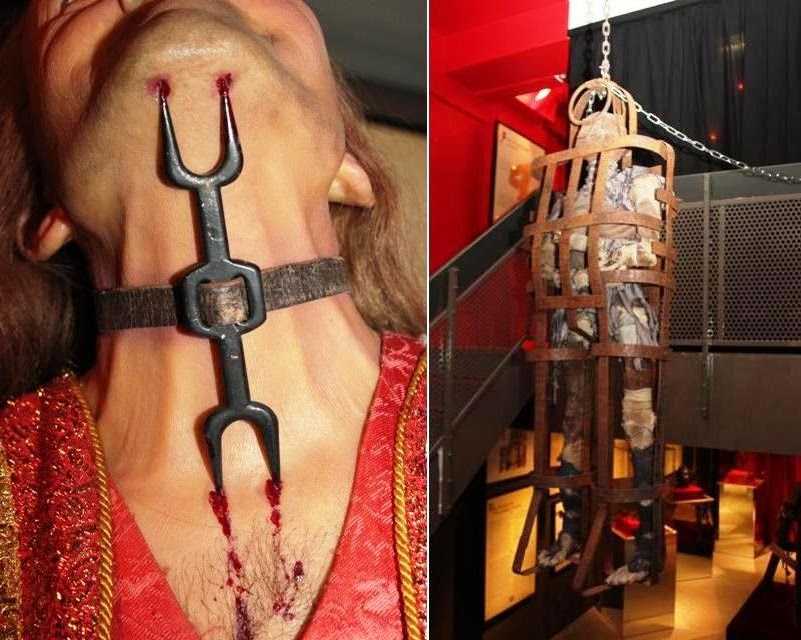
The museum is located on Amsterdam's Red Light District. And it's not a place for the faint of heart. The Medieval Torture Museum lives up to its name with dark lighting and an entrance that immediately sends visitors down a dark corridor.
The exhibition itself is open to visitors, as well as a tour introducing various types of torture, mainly focusing on medieval times. Among the instruments of torture, one can find an interrogation chair, a hammer for crushing bones, a heretic's fork, various types of hanging cages and masks, and of course, the guillotine.
18. Capuchin Catacombs (Palermo)

The Capuchin Catacombs are located in Palermo. These famous burial catacombs are famous for the fact that the bodies are kept here in the open and freely accessible. In total, more than eight thousand aristocrats, monks and representatives of elite families are buried here. As the founders of the burial correctly noted, the characteristics of the soil and atmosphere of the catacombs prevent the decomposition of the bodies.
For better preservation, the bodies were dried in a special room for eight months, then rubbed with vinegar, dressed in clothes and hung on the walls of the catacombs, or (in rare cases) placed in a coffin. Over the years, the catacombs expanded, new corridors appeared. The main ones are the Corridor of Monks, the Corridor of Men, the Cubicle of Children, the Corridor of Women, the Cubicle of Virgins, the Corridor of Professionals, the Corridor of Priests.
19. Dutch Cheese Museum (Alkmaar)
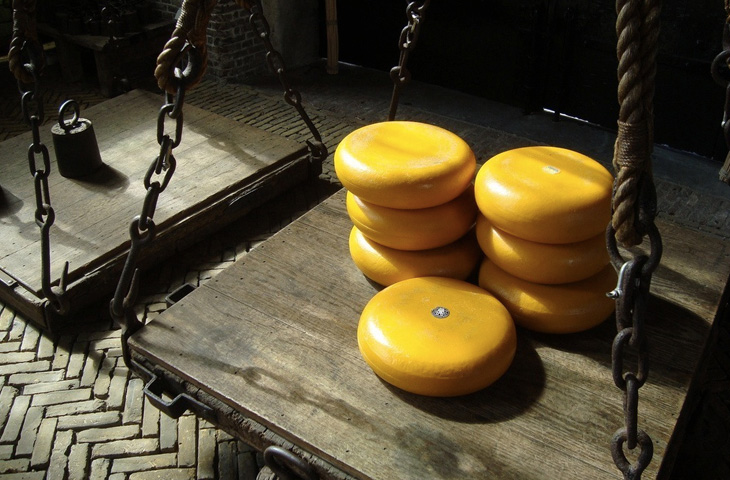
When you arrive in Alkmaar, the best way to get to know it is to wander around the almshouses, monuments and museums. This journey will definitely take you to the old cheese weighing house from the 14th century, where the Dutch Cheese Museum is located. It is located in the Waaggebouw (weighing room) at the cheese market. The museum exposition tells in detail about the history of cheese production and trade. Here you can see slides, as well as portraits of Dutch women from the 16th century, paintings that immerse visitors in the history of Holland.
The cheese museum also displays a variety of tools and instruments that craftsmen have used to make cheese over the centuries. At the bazaar located near the museum, you can taste different types of cheese. Tastings are held daily from April to September. The costumes of the cheese vendors, who wear straw hats and drive old carts to transport cheese, create a special atmosphere and historical atmosphere.
20. Guinness Museum (Dublin)
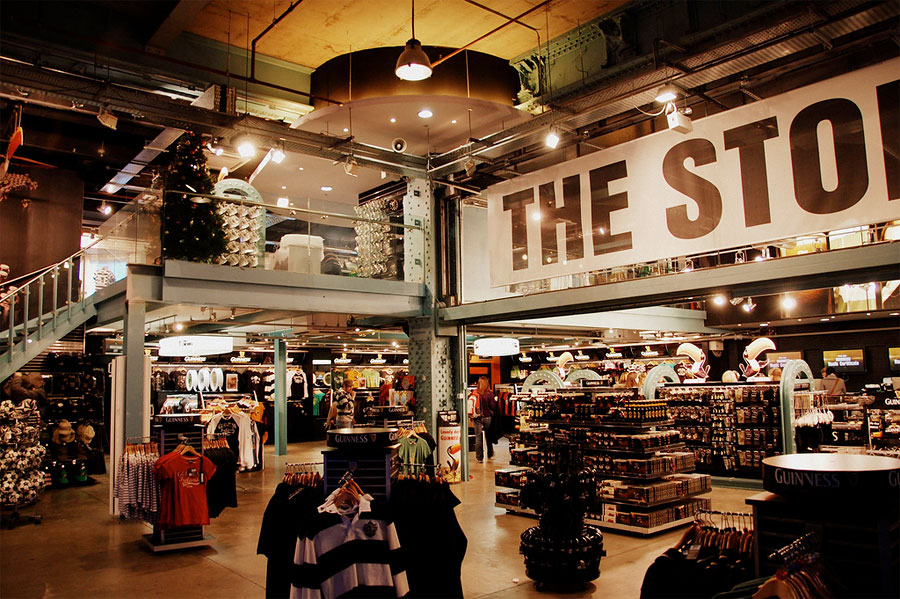
The Guinness Beer Museum is one of Dublin's iconic attractions (the most popular free attraction in the country). It opened in 2006. On the ground floor of the museum there is a small souvenir shop where you can buy chocolates and original sweets with beer filling. On the second floor there is brewing equipment, these are huge and ancient units. Visitors can even press buttons. On the next floor there are advertising posters and placards and a collection of different-sized beer bottles. On the top floor there is an observation deck, which in good weather offers an excellent view of the entire city.
But the most favorite place for visitors is where the tasting takes place, located on the sixth floor of the museum. The famous beer is slowly poured into a glass at a 45-degree angle until a snow-white foam cap forms above the glass.
21. Museum of Celebrity Underwear (Brussels)
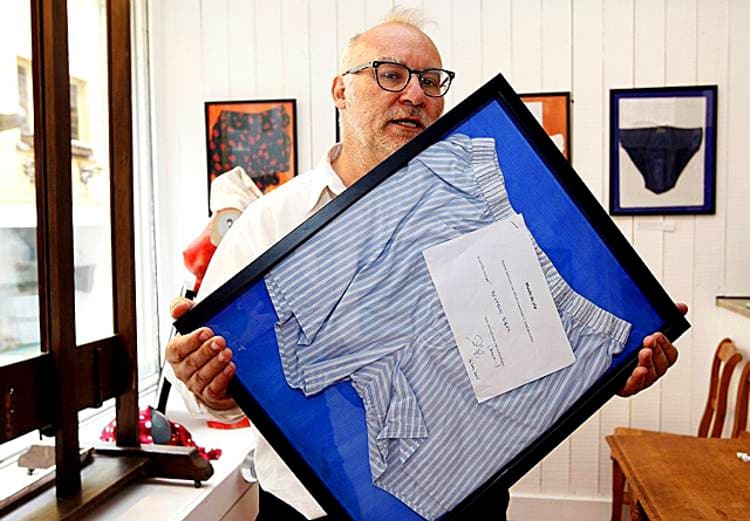
The exhibits of the lingerie museum are divided into two categories: underwear that previously belonged to famous politicians or show business figures, as well as original photo collages with portraits of celebrities and their underwear. The exhibits undergo a rigorous selection process - to get into the exhibition, the underwear must not only belong to a famous person, but also be worn at least once.
The Brussels Museum of Underwear currently has several dozen items of celebrity intimate attire in its collection. Among them, a special place is occupied by the underpants of the Belgian Finance Minister - elegant boxers with blue and white stripes. A portrait of Nicolas Sarkozy with underpants in the colors of the national flag on his head is very popular with tourists. The head of the museum is convinced that a normal person should not be offended by such jokes and dreams of getting a couple more interesting exhibits.
The collection includes a thong once worn by French porn star Brigitte Lahaie, as well as the boxer briefs of Belgian Finance Minister Didier Reynders.
The work of artist Jean Buquoy, known for his use of underwear in art, the most prized exhibit is a portrait of French President Nicolas Sarkozy, disguised as Napoleon, but with a pair of striped underpants on his head.
22. Museum of Unhappy Love (Zagreb)
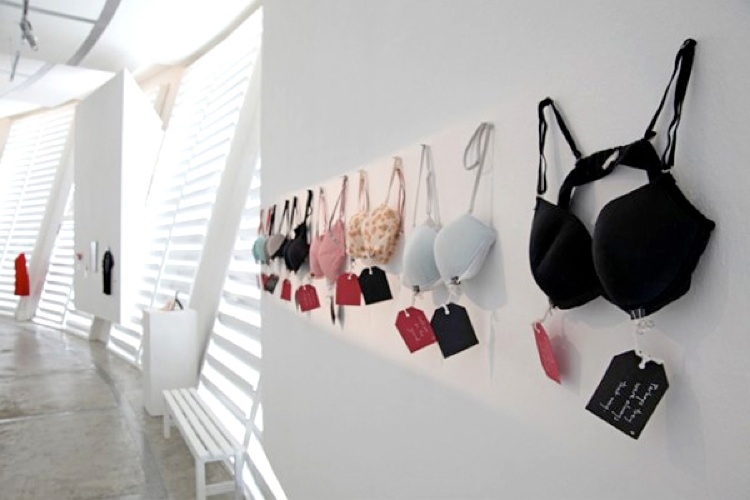
Just a couple of years ago, a new museum opened in the Croatian capital. Its main theme is devoted to failed love affairs. The museum's collection consists of items donated to the museum by former lovers: romantic letters, valentines, text messages, plush toys, photographs, accompanied by stories of broken hearts.
The museum exhibits can be quite original, like the axe of a lesbian, which she used to smash her friend's furniture after a breakup. Or, for example, a broken Vespa scooter, bought for a loved one, but damaged after the breakup. Or a coffee machine, which ended up on display simply because the "beloved" preferred caffeine to his beloved. The concept of the museum was created by artists Olinka Vistice and Drazen Grubisic. After their own breakup, they decided to creatively use shared things and instead of throwing everything away, they collected everything into a large collection of the museum of broken relationships.
The museum's creators are confident that visiting the museum can have a therapeutic effect on people going through a breakup. But in general, museum visitors fall into three categories: 1. simply curious people, 2. those who are going through a breakup and are suffering, 3. those who themselves add to the museum's collection.
The organizers hope that the museum will become a kind of therapy for all the abandoned and unhappy, because next to each story of separation there is a story of how the hero coped with it. The Museum of Unhappy Love is located in Zagreb (Croatia).
23. James Bond Museum (Cumbria)
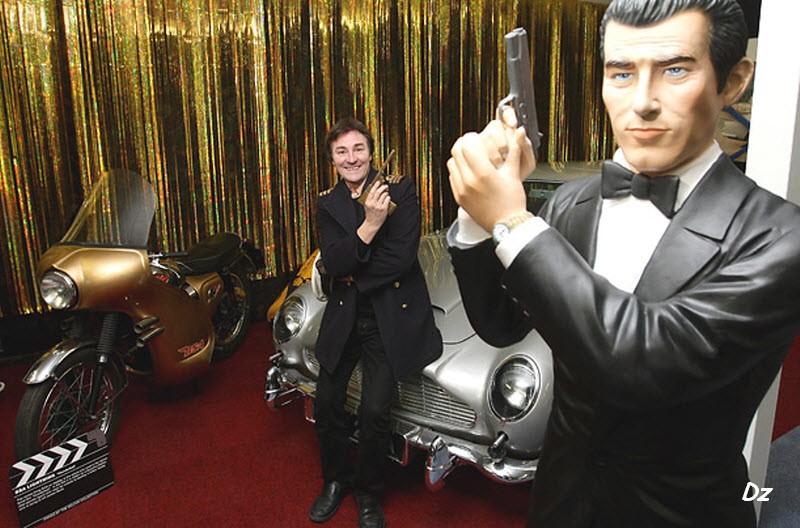
Nelson acquired exhibits for the museum at auctions and collected a large number of accessories that were used during the filming of films about the famous super agent. Some of the creators of the popular film epic also provided assistance.
In the museum you can see Octopussy from Octopussy, as well as the original copy of the golden gun from The Man with the Golden Gun. And even the Ford Mustang from Diamonds Are Forever, which the tireless collector is very proud of. However, this is not the only car used in the filming of the series. The museum in Keswick also has a Lotus Esprit Turbo from The Spy Who Loved Me. But the most curious exhibit is probably the Soviet T-55 tank, which Pierce Brosnan rode in the role of James Bond in GoldenEye.
24. Museum of Smoking (Paris)

For centuries, smoking has been treated with great ambiguity: some considered it a stupefying magic, some associated it with a terrible devilish habit, and some regarded smoking as a sign of bohemian life... And in 2001, a very original museum was opened in Paris near the Place de la Bastille - the Museum of Smoking.
Despite its rather small area of only 60 square meters, the museum’s exhibition is very, very informative: it contains a wide variety of items, one way or another connected with smoking.
Visitors to the museum will see a magnificent collection of smoking pipes of various shapes and sizes (including even "spy" pipes with secret compartments). Among them are both common types of pipes and quite rare ones. In addition to pipes, the exhibition includes various types of tobacco, air fresheners and numerous paintings, engravings and photographs.
The museum has a small greenhouse where visitors can see how tobacco is grown. Don't think that the museum promotes smoking, it is quite strict about this - among the exhibits there are brochures about the dangers of smoking. Here they simply tell about the history of smoking. In a small shop at the museum you can buy both original pipes and various literature with recommendations on how to break this habit.
25. Museum of Lies (Brandenburg)

The creators of this establishment proudly assure visitors that all exhibits presented in the halls are exclusively fakes. The deception begins with the building itself in the form of an ancient castle, which in fact was built quite recently. The museum has ten rooms, each of which is filled with original exhibits.
The museum's collection is quite interesting, because among the exhibits there are absolutely "unique items". There is a working flying carpet, Van Gogh's severed ear, a radio station from the Titanic and personal belongings of its passengers, as well as Hitler's false moustache, a witch's broom, a toy airplane that belonged to the young future Chancellor of Germany and even a mop that allegedly belonged to Stalin's father. And that's not all, because the imagination of the museum's creator is limitless.
Reinhard Zabka is a former artist and dissident known in Germany. He is convinced that the line between truth and lies is often blurred in life, and this is especially true in the field of art, because art itself is an illusion.
Reviews from visitors are mixed: some are delighted, while others are more skeptical. There are tourists who think the director is crazy and the exhibits are just trash. In any case, if you find yourself in Germany, you should visit here. Rest assured - establishments of this type completely dispel the stereotypes that museums are always boring and dusty.
26. Whispering Museum (Pennsylvania)

This unusual museum is located in Philadelphia and has an extensive collection of all sorts of amazing oddities and creepy medical mysteries.
The atmosphere in this museum is very specific, and the architecture contributes to this — after all, it is located in an old manor house. The house has high ceilings, dark wooden shelves hang on the walls, on which bottles with various pickled pathologies are placed. The sensations here are very unpleasant, because in such an atmosphere you begin to feel clearly superfluous and want to get away from here as soon as possible...
27. Cockroach Hall of Fame and Museum (Plano, Texas)

Pest control specialist Michael Boden created a cockroach hall of fame in his pest control store. The hall of fame features dozens of different species of cockroaches, both living and dead. The exhibits are dead cockroaches donated by various people.
One of the most notable exhibits is a dead cockroach dressed in a mink coat, sitting next to a tiny piano, created by an 85-year-old lady. She called it "Liberoachi."
28. Instant Noodle Museum

Instant noodles were invented by Japanese Momofuku Ando in 1958, and the museum in Osaka contains everything that could possibly be related to this product.
Moreover, visitors can not only look at the exhibits, but also take part in the creation of unique noodles at a mini-factory, and the finished product can be taken away in a plastic cup.
29. Lunch Box Museum (Columbus, Georgia, USA)
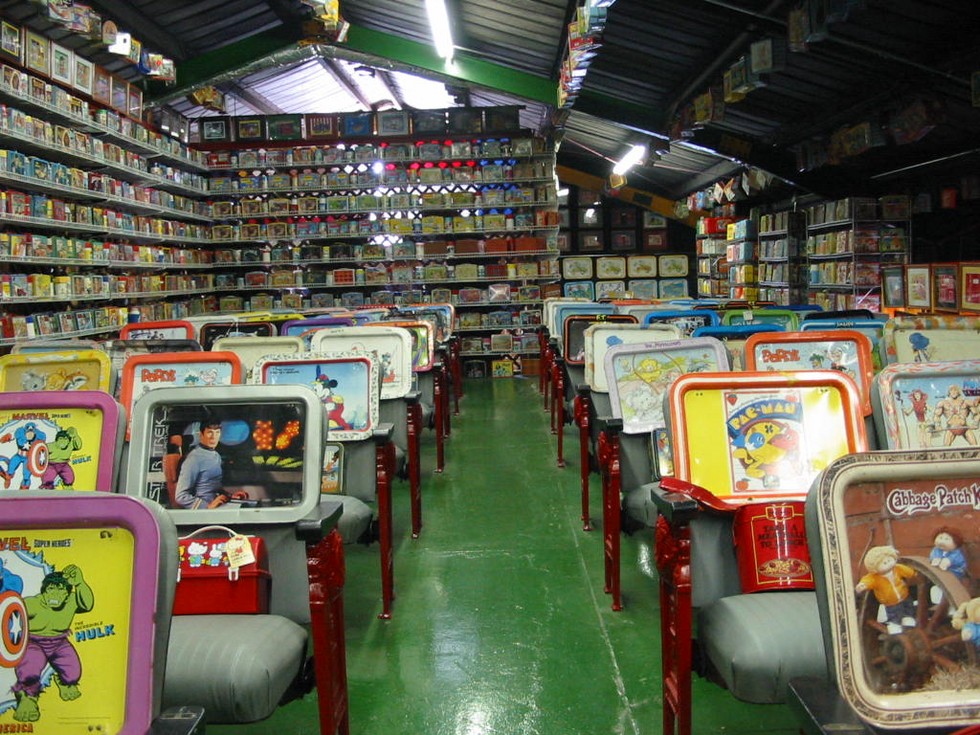
Created by the Smithsonian Institution, the Lunch Box Museum is home to the largest collection of school lunch boxes. The museum's exhibits are relatively new — the museum's owner began collecting them four years ago.
Despite this, the collection has grown by leaps and bounds, and now includes more than 1,000 lunchboxes and related collectibles, including coolers and thermoses. A tour of the museum gives visitors the chance to learn about the history of the trusty lunchbox, from the original tin models to the modern plastic ones.
30. British Lawnmower Museum (Southport, Lancashire, England)

Since its opening, the British Lawnmower Museum has become an object of interest for people all over the world. The museum's workshops repair and restore old lawnmowers. The museum's collection consists not only of machinery, but also of various types of memorabilia, including patents and drawings dating back to the 18th century.
The lawn mowers range from classic models used in landscaping to machines known for their use in lawn mower racing. The world's largest collection of toy lawn mowers is a must-see!
31. Beijing Waterworks Museum (Beijing, China)

The Beijing Waterworks Museum was built on the site of the city's first waterworks. The museum offers visitors a tour of the 90-year history of Beijing's waterworks.
The exhibition is divided into three displays designed to depict the various stages of the development of plumbing. The museum houses almost 300 objects, illustrations and samples.
32. Mustard Museum (Mount Horeb, Wisconsin)
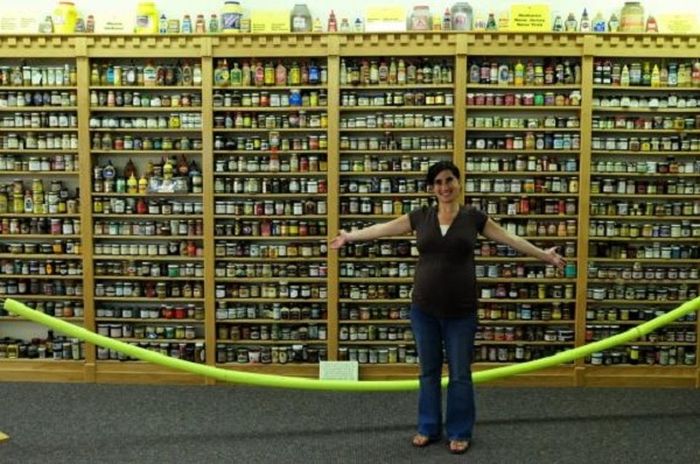
Founder Berry Levenson began collecting mustard in the 1980s, but the museum didn't open until 1992. The museum's collection includes more than 4,800 types of mustard in bottles, tubes and jars, produced in 50 states and 60 countries.
The exhibit also includes a historical tour of mustard production. Mustard lovers should definitely visit the museum's unique gift shop, which sells many different types of mustard.
33. Kansas Barbed Wire Museum (La Crosse, Kansas)

The Kansas Barbed Wire Museum opened in 1971. It educates people about the history of barbed wire, often called the "Devil's Rope." The collection now includes more than 2,000 types of barbed wire, some dating back to the 19th century.
The tour includes a visit to the Barbed Wire Hall of Fame and Research Library, and a visit to the movie theater to watch an educational film about the history of the multi-million dollar industry.
34. Titan Rocket Museum (Sahuarita, Arizona)

The Titan Rocket Museum in Arizona is the only publicly accessible Titan II launch site in the United States, and a visit to the site is an extraordinary experience. A one-hour tour of the complex includes a view of the 100-foot-tall Titan II rocket in its vertical launch silo and its 8-foot-thick walls.
The highlight is a simulated missile launch, controlled by a control room located underground. The museum also offers an insight into the history of the Cold War.
35. Rene Magritte Museum (Brussels)
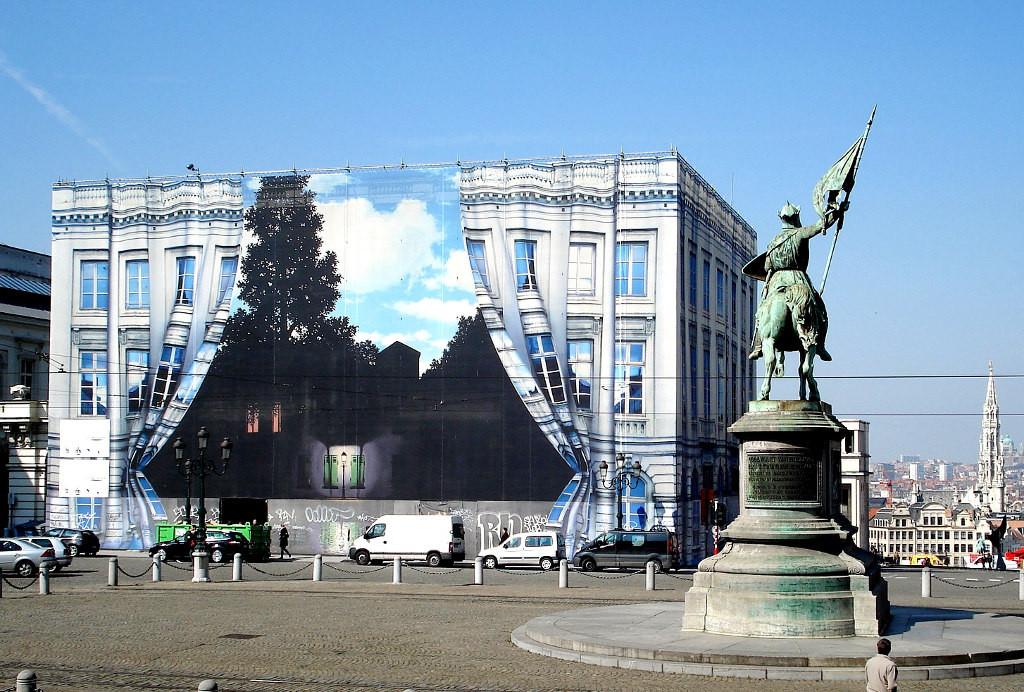
Not a single person who saw this building for the first time went any further - every passerby stopped in bewilderment, looked closely and tried to remember what was here before.
On June 2, 2009, a new museum dedicated to the work of the famous surrealist artist René Magritte opened in Brussels. The Royal Museum of Fine Arts allocated a space of 2.5 thousand square meters for it. The exposition of the René Magritte Museum includes more than 200 works by the author - this is the largest collection in the world. The exhibits include paintings, gouaches, drawings, advertising posters, old photographs, musical scores and even films.
The museum's collection covers all periods of the artist's career. Earlier works, created before 1930, are presented on the third floor of the museum. Here you can see posters and wallpaper patterns for the Peter Lacroix factory, where the artist worked from 1922 to 1926, paintings influenced by Giorgio de Chirico, photographs, as well as Magritte's famous paintings with words, including the series "The Treachery of Images"
36. SPAM Museum (Austin, Minnesota)
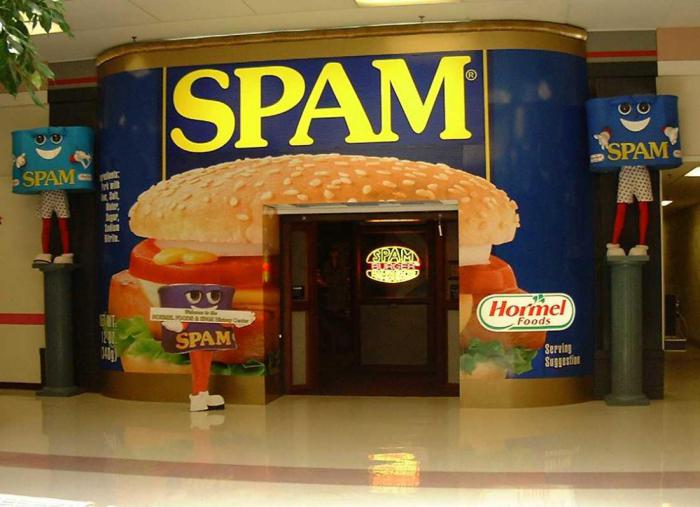
SPAM (pronounced spam) is a brand of canned meat produced by the American company Hormel Foods Corporation. A great museum for lovers of the notorious food, it tells the story of the sausage meat, which first appeared on store shelves in the 1930s. A tour of the museum gives visitors the opportunity to learn more about this product.
At the exhibition, you can make your own can of this canned meat, take part in a quiz and test your knowledge of the product, and visit the "Virtual Restaurant". You should also visit the souvenir shop, where you can take home a variety of items and memorabilia related to this product.
37. Cumberland Pencil Museum (Keswick, Cumbria, England)

The museum is located on the ground floors of a pencil factory. Visitors walk through a replica of a graphite mine. A tour of the museum gives visitors the opportunity to learn about the history of pencils, telling how they were first made.
Also worth a visit are the drawing areas where children can create their own masterpieces. Be sure to check in advance when the demonstrations are held, where parents and children can get expert advice. The museum also houses the world's longest pencil, which is also worth a visit!
38. Burlingame Candy Museum (Burlingame, California)

This year the museum celebrates its 14th anniversary. The Lollipop Museum pays tribute to the traditional lollipop. The most valuable exhibit is the largest and most impressive vending machine in the world, measuring almost 2.5 m.
The museum houses the largest collection of old vending machines and other candy-related items. There is also a gift shop where you can create your own piece of candy history!
39. Salvador Dali Museum (Figueres, Spain)
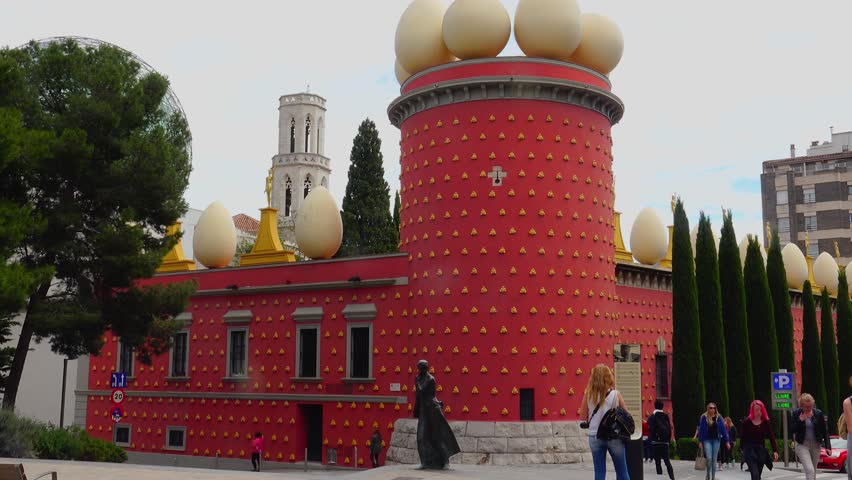
"I want my museum to be a monolith, a labyrinth, a huge surrealist object. It will be an absolutely theatrical museum. Those who come here will leave with the feeling that they have had a theatrical dream."
Salvador Dali
The master's wishes were embodied in the walls of this building in Figueres. Here are not only Salvador Dali's paintings, but also sculptures, collages, various devices and everything that his imagination created. This is not even a museum, but a kind of "labyrinth of illusions". And on top of it are large eggs.
From the inside, the building looks very much like a labyrinth with rounded corridors between the floors and rooms of the museum. The role of the ceiling is played by a domed stained glass window made of several tens of thousands of triangular-shaped glasses. In the middle of the spacious hall is a portrait of Salvador Dali's beloved wife Gala, which was named "Leda and the Swan".
The specially equipped halls of this theatre-museum house the world-famous creations of the great maestro. Namely, the bed from the brothel "Le Chabanais" - a bright pink sofa in the exquisite shape of women's lips, which belonged to the famous actress Mae West from America.
The key exhibit in the collection of the Salvador Dalí Theatre-Museum in Figueres is the so-called “rainy taxi" - one of the artist's own Cadillacs with several mannequins inside.
If a museum visitor throws a coin into the hole, a real tropical downpour may break out in the car. But the most important treasure of the museum, of course, is the collection of works by the great Salvador Dali himself: drawings, paintings, engravings and sculptures.
40. National Museum Te Papa Tongarewa (Wellington, New Zealand)
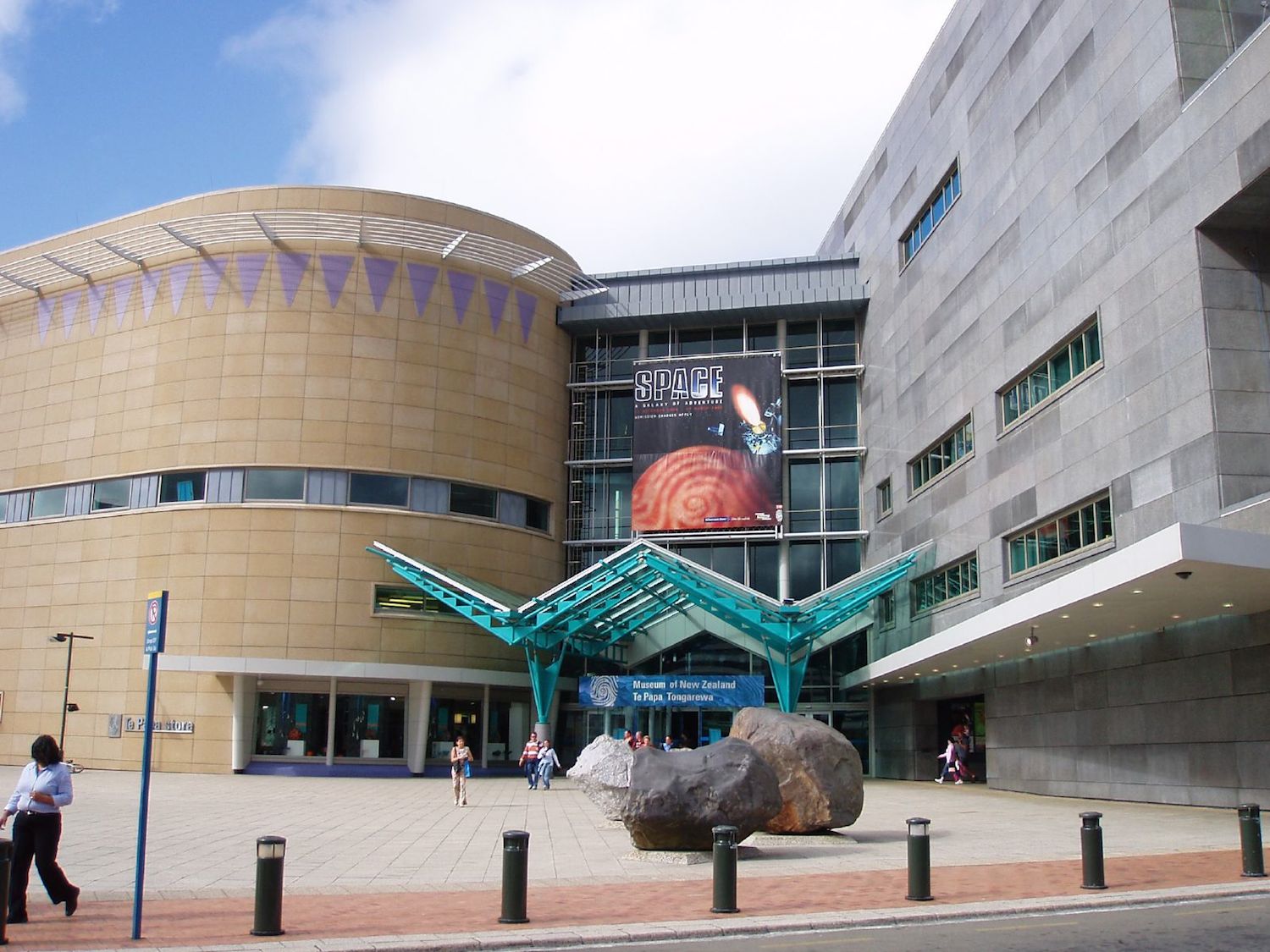
The National Museum of New Zealand focuses on the history of the island nation and the culture of its indigenous people, the Maori. Nature lovers will be pleased with the huge collection of dinosaurs, birds, fish, insects and even mythical creatures, such as orcs. And all because it was in New Zealand that Peter Jackson filmed the famous film trilogy "The Lord of the Rings".
41. Museum of Latin American Art (Buenos Aires, Argentina)
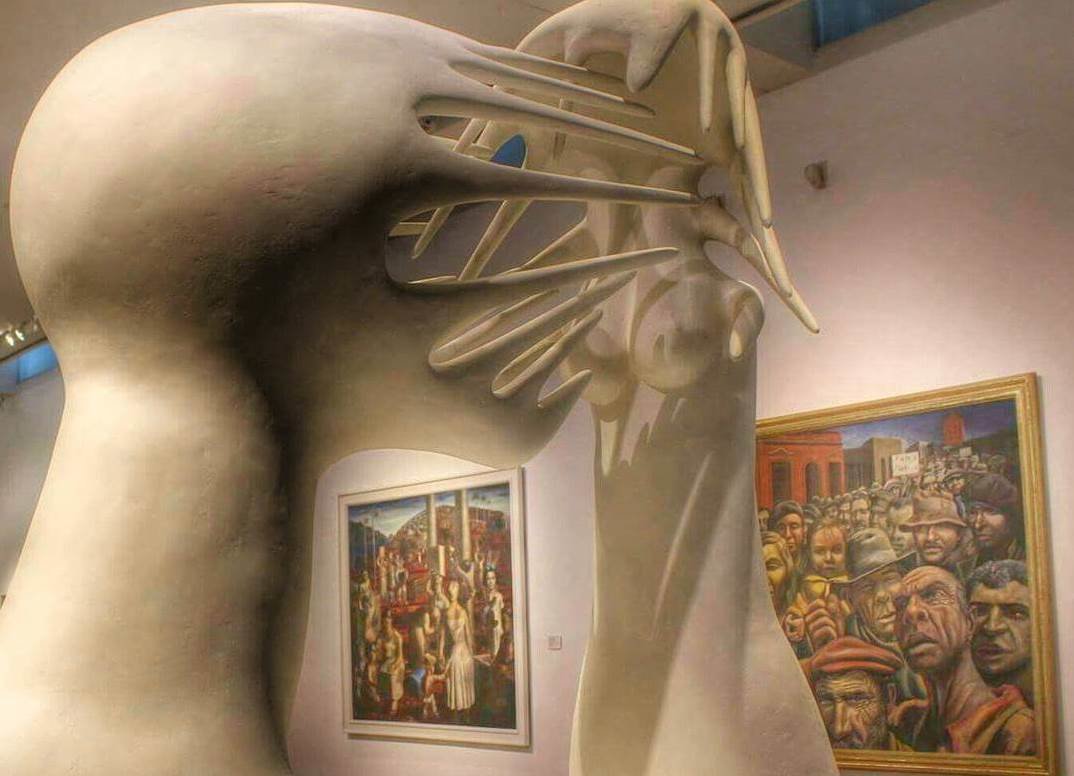
The museum's exhibition is dedicated primarily to 20th-century Latin American art: the first floor houses works by contemporary masters, while the second floor features earlier paintings. Almost all of the exhibits are owned by the Argentine philanthropist Eduardo Constantini.
42. Terracotta Warriors and Horses Museum (Xi'an, China)

The Great Wall and the Terracotta Army are among the most recognizable symbols of China, built during the reign of Qin Shi Huangdi, the first emperor of the unified Chinese state. The powerful ruler saw them as a stronghold of his country's security and a continuation of his personal power in the afterlife. It is noteworthy that there are no identical warriors among the figures: they all differ in rank, the weapons they use, and their facial expressions.
43. Yad Vashem Holocaust Memorial (Jerusalem, Israel)
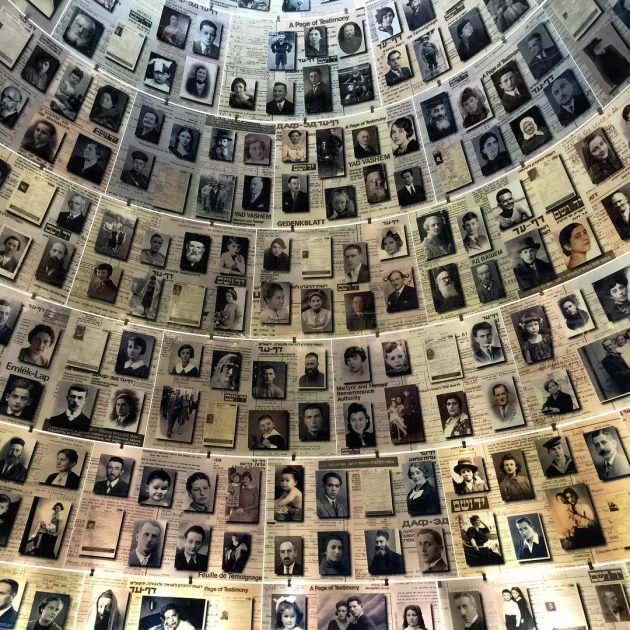
The Holocaust Memorial Complex is located on Mount Herzl in the western part of Jerusalem. Eternal memory of the catastrophe and a tribute to all fighters against fascism.
44. National Gallery of Art (Washington, USA)
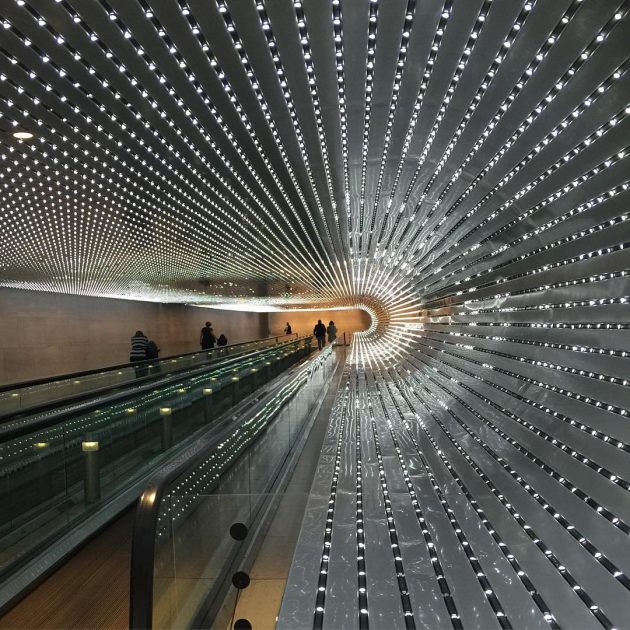
The complex consists of a sculpture garden and two buildings connected by an underground passage. The museum's collection displays an innumerable number of works of art from different eras and styles. Incidentally, a considerable part of the exhibits are masterpieces of the Hermitage, purchased by American connoisseurs of beauty from the Soviet authorities.
45. Inhotim (Brumadinho, Brazil)
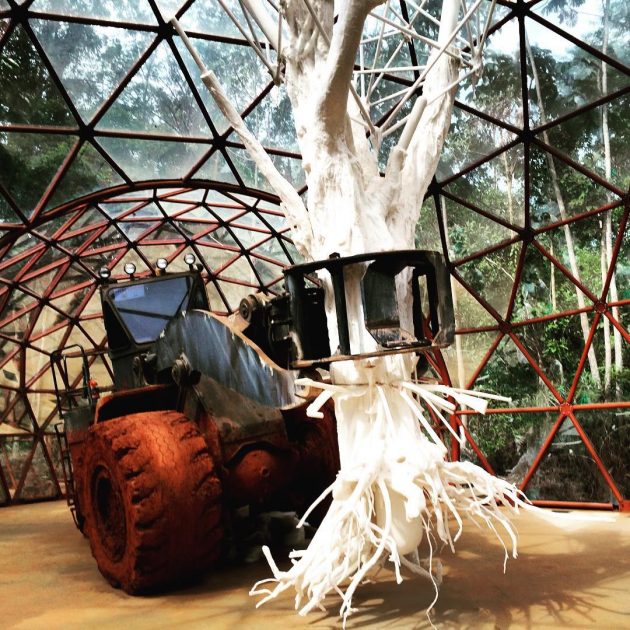
Art objects under the canopy of primeval forests? Why not! In the Brazilian park-museum, contemporary art objects are placed right in the open air. Of course, there are also indoor exhibition centers of various kinds. The bright Inhotim is often called "Disneyland for adults."
46. Ricardo Brennand Institute (Recife, Brazil)
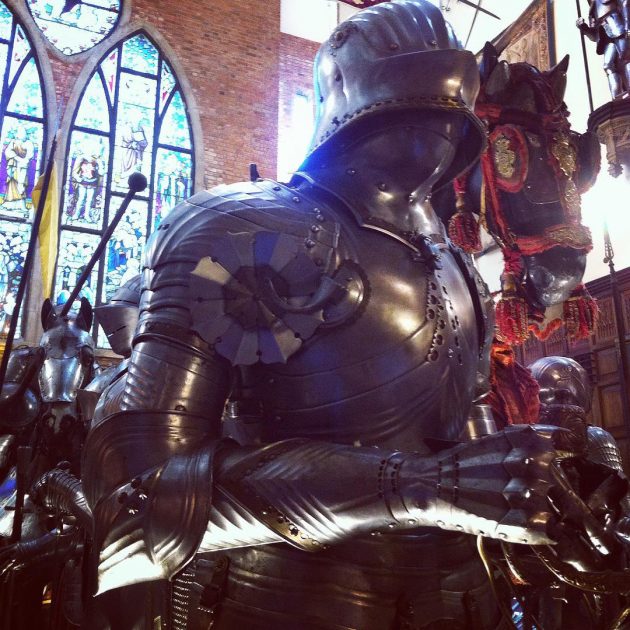
The cultural center belongs to the Brazilian collector Ricardo Brennand and includes a museum, art gallery, library and park. A considerable number of exhibits are dedicated to the colonial era of Brazil. Of particular interest to tourists is the impressive collection of weapons.
47. National Air and Space Museum (Washington, USA)

The Smithsonian Institution Research Center is a real outlet for those who, for whatever reason, cannot become a pilot or astronaut. Under the high vaults of the museum, unique examples of real aircraft and spacecraft are collected.
48. Getty Center (Los Angeles, California)

The Getty complex will delight its visitors with amazing architecture with a beautiful view of Los Angeles. The museum presents works by European photographers, sculptors and artists. The adjacent park is famous for the unique murmur of its waterfall. Educational classes and exhibitions are held within the walls of the research institute.
49. Pergamon Museum (Berlin, Germany)

The museum's exposition is divided into three blocks: the Antique Collection, the Museum of Islamic Art and the Museum of Western Asia. Here are presented monumental works of architecture, sculpture, mosaics, reliefs and writing with a very difficult fate. The fact is that the bombing of Berlin during World War II affected the Pergamon Museum, as a result of which part of the collection was transported and has not yet been returned.
50. National World War II Museum (New Orleans, USA)
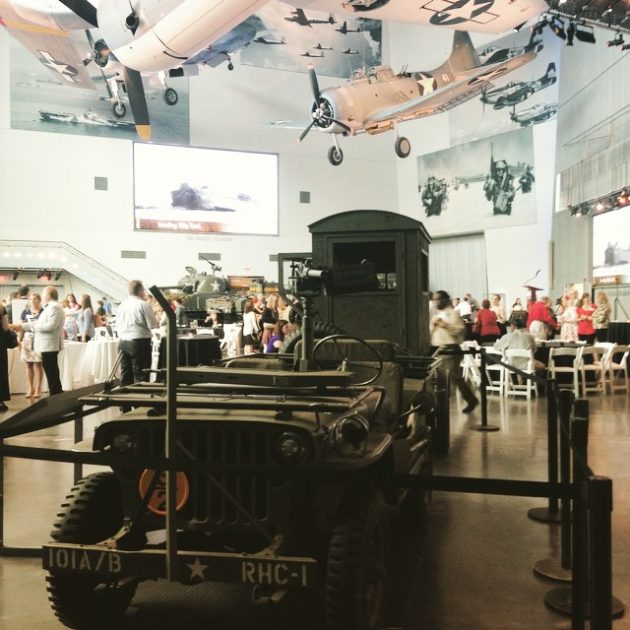
The opening of the museum was timed to coincide with the 56th anniversary of the strategic landing operation in France in 1944. The atrium of the building displays military equipment that contributed to the Allied victory in World War II.
51. Vincent van Gogh Museum (Amsterdam, Netherlands)
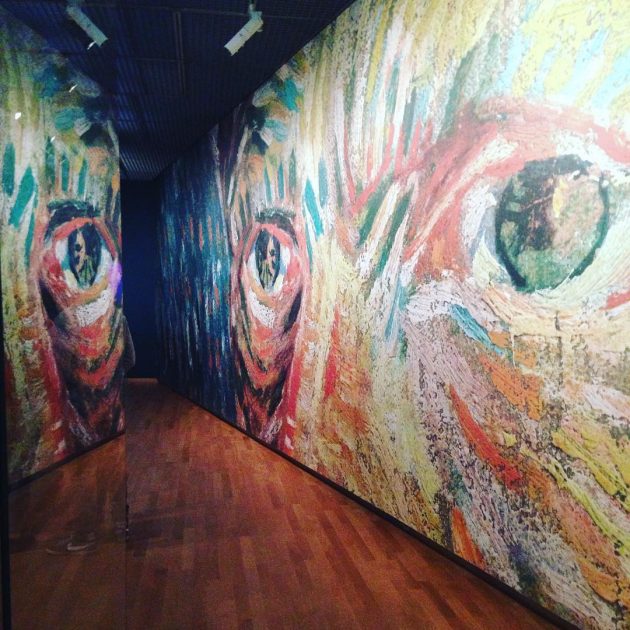
There is no price for beauty, but we have heard more than once about the fabulous sums for which paintings by the famous Dutch postimpressionist artist are sold. In addition to the master's own works, the museum exhibits works by his equally famous contemporaries: Paul Gauguin, Claude Monet, Pablo Picasso.
52. New Acropolis Museum (Athens, Greece)

The complex, expensive and protracted construction of the museum was due to two interrelated reasons. Firstly, Greek history had accumulated an excessive number of artifacts. Secondly, the British did not want to return the stolen historical and cultural valuables, citing the fact that there was nowhere to display and store them. In the end, they had to give them back.
53. National Museum of Anthropology (Mexico City, Mexico)
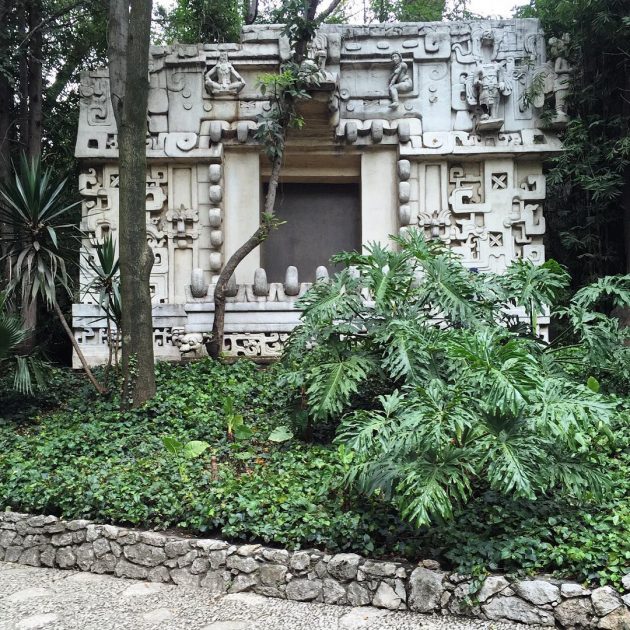
The culture of the indigenous peoples of Mesoamerica is shrouded in a haze of fantasy, ideas about their bloodthirstiness and unprecedented wealth. How true all this is, you can appreciate in the main museum of Mexico, where ancient values of such powerful civilizations of the past as, for example, the Mayans or Aztecs are presented.
54. Vasa Museum (Stockholm, Sweden)

Scandinavia's most visited museum was built around the 17th-century Swedish navy's Vasa, the oldest surviving warship. Oddly enough, it survived the test of time thanks to its very early wreck on its maiden voyage. Having sunk in low-salinity waters, the ship was not eaten by sea worms.
55. Rijksmuseum (Amsterdam, Netherlands)
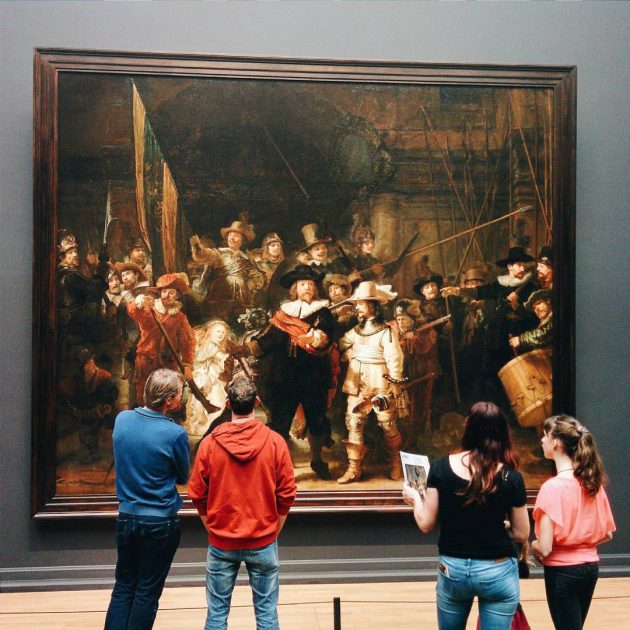
The central place in the exposition of the museum, founded in 1808 by Louis Bonaparte, is occupied by paintings by Dutch masters of the 15th-19th centuries. For example, here is Rembrandt’s “Night Watch” – a canvas measuring 363 by 437 cm, which is famous for its difficult history with attempts at destruction, a lot of mysteries and several references in cinema.
56. National Gallery, London (London, UK)

The art gallery annually receives about 6.5 million tourists. More than two thousand paintings are exhibited in chronological order, which helps the unprepared viewer to follow the development of Western European painting since the 13th century.
57. The State Hermitage Museum (St. Petersburg, Russia)

A Mecca for all visitors to the Northern capital of Russia, with a mind-boggling number of exhibits, unimaginable decoration, as well as representative offices throughout the country and beyond.
58. Louvre (Paris, France)
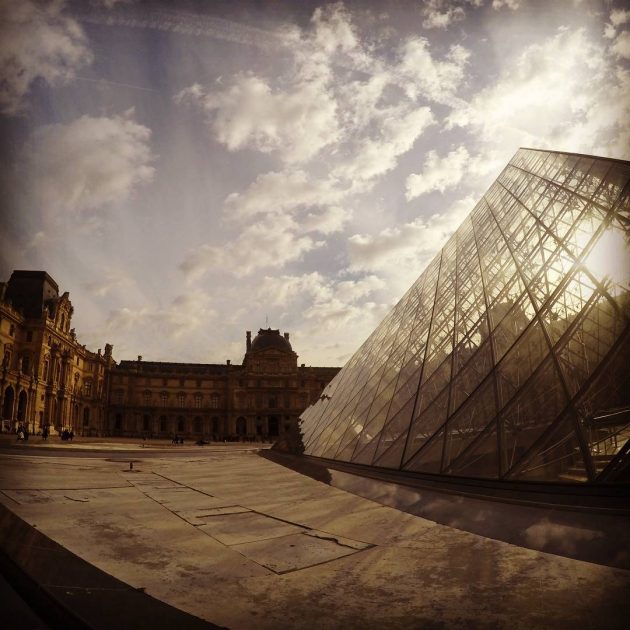
Trying to decipher the smile of the "Mona Lisa" through the lens of a smartphone is the sacred duty of every visitor to Paris. To do this, you will have to visit the most popular art museum in the world. However, before meeting Leonardo da Vinci's painting, you will have a photo shoot with the glass pyramid - the main entrance to the Louvre.
59. National Museum of Prado (Madrid, Spain)

Along with the striking works of art by the masters of the Flemish, English, German and French schools, the museum, of course, houses a rich collection of paintings by Spanish artists. Admirers of El Greco, Velazquez and Goya will be delighted.
60. Art Institute of Chicago (Chicago, USA)

The museum is also the highest art school in the United States, where such artists as Walt Disney received their education. Of course, there are many examples of American art among the exhibits.
61. Orsay Museum (Paris, France)
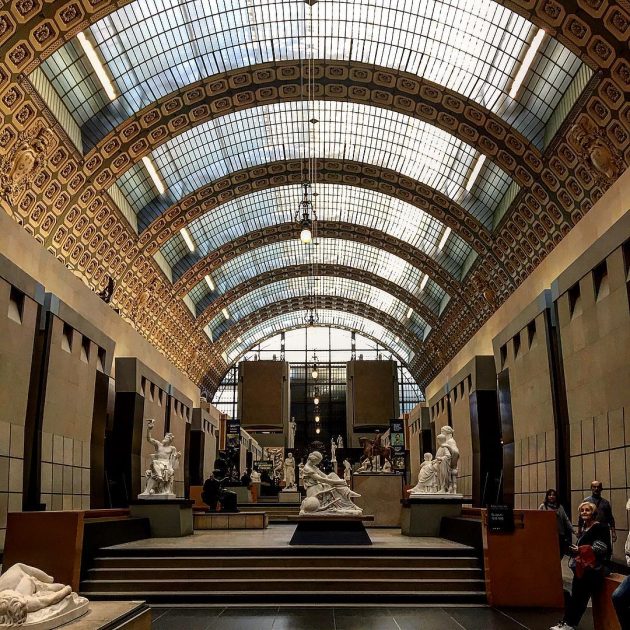
The museum's collection is housed in a former railway station. In addition to a rich selection of Impressionist and Post-Impressionist works, visitors can enjoy wonderful views of the Parisian Seine.
62. Metropolitan Museum of Art (New York, USA)
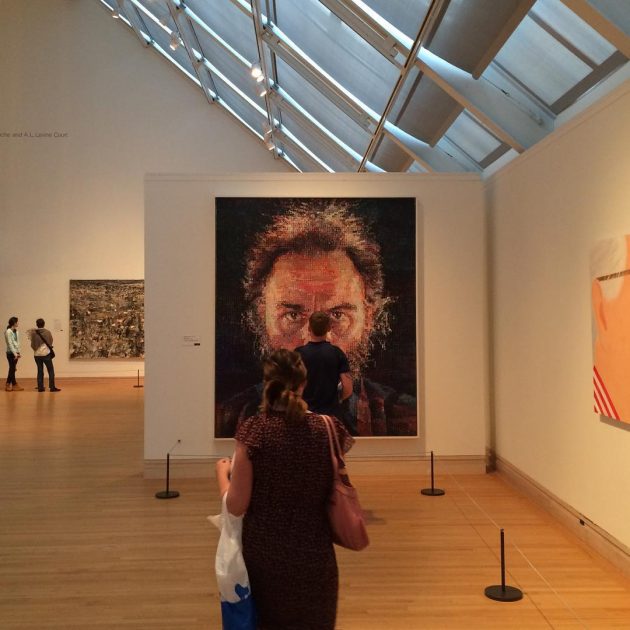
The Big Apple is already packed, and now there are millions of visitors running from one city attraction to another in order to get to know them as quickly as possible. With the Metropolitan Museum, it won't be quick: even a quick look at some of the "motley" exhibits will take many hours.







